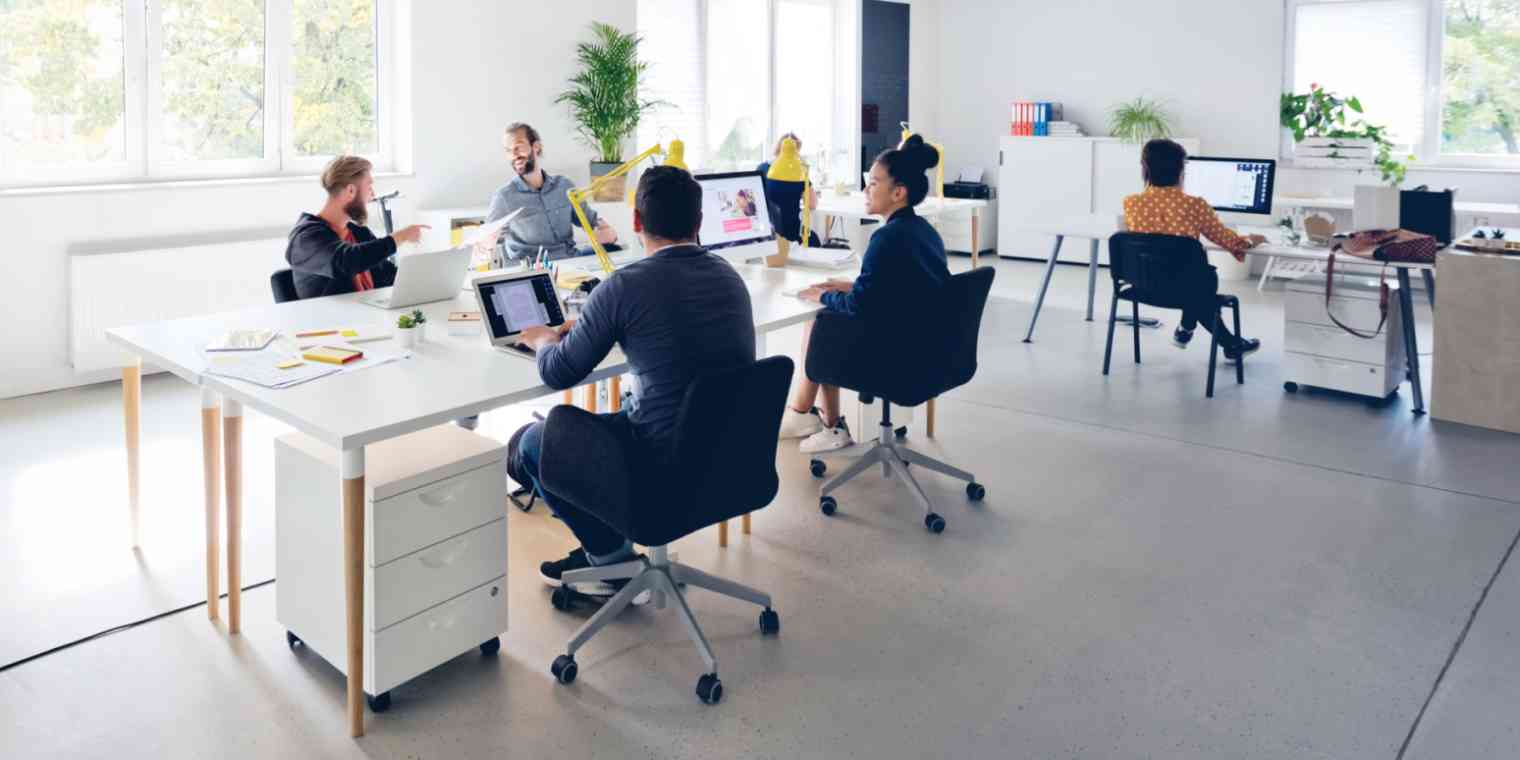"It'll be so much easier now that I can use the office printer again," my friend said the other day. I didn't get it.
My friend was going back to the office after about a year of remote work. I've been working remotely for longer, and I was confused. I understand being happy to see people or getting free coffee—but the printer? Really?
"The printer?" I asked.
"Yeah, it's so much easier than the process we do now."
It turns out that each case they worked on had to be signed and filed at their central office (government requirements and all). Because everyone was working from home, here's what they had to do:
Download contracts
Print the contracts
Sign the physical copy
Take a photo or scan it
Attach it to an email
Send it to the main office, which prints and archives it
These people are, in 2021, having their employees download and scan personal client information just so they can sign one spot on each page. I absolutely understand the need for keeping physical copies of things, but there are better solutions for the workflow they're using—and it points to a wider problem.
The pandemic upskill
Businesses had to change their processes when the pandemic hit. It wasn't just in-person meetings that turned into Zoom calls. Lots of scanning and signing that happened in the office infrastructure now had to be moved to a hundred different spaces: workers' home offices, sitting rooms, kitchens. Companies had to figure out new ways of doing old procedures.
And as my friend's company demonstrated all too well, not all of them were innovative. Some businesses, however, managed to use the pandemic to improve their collective skillset. With a move back to the office (even if partial), I worry that some old habits will kick back in, and we'll lose the momentum on making life easier with technology.
Take virtual walkthroughs for real estate listings. It's amazing how much these evolved once people couldn't go see a place in person. Before, you'd get some photos taken with a mobile phone (oh look at the agent reflected in the mirror behind the flash's glare!), and for the most part, an incomplete description of the property. Then you had to book an appointment, which would probably happen during your working hours since everyone wants an evening or weekend slot. Or you'd attend an open house and stand in a line that's 40 people long, only to find out the house isn't quite like what you were after.
Things are different now. Most professional real estate listings offer video walkthroughs and a detailed description of the space. It's something only the most tech-advanced agencies were doing before, and now they're commonplace. I can't imagine anyone wanting to go back to the days of yore, but that might be what happens.
A McKinsey report showed that 92% of companies interviewed didn't think their business model could survive the digital revolution—and that was before the pandemic ever hit. In this sense, the pandemic just accelerated the inevitable.
Adapt or die
My parents have a news business in Brazil that's been going since 1986. Back then, it used a protocol that predates the internet called STM-400. Their business, Jornaldodia, evolved over the years, always moving on to adopt whatever was the most widespread service protocol—eventually the web. They wanted to ensure customers could get their dose of news wherever they were. This allowed them to reach customers not only in Brazil, but in Portugal, Angola, Mozambique, and many other countries where Brazilians live or Portuguese is spoken.

Today, my siblings and I help my parents manage the app that's now the main traffic driver. The website is no longer the center of their business, and they embraced the opportunity. It required that they learn new skills, use different tools. They're in their 70s, but that didn't stop them. Jornaldodia carries on. It looks different from what they originally started with, but the goal remains the same: bring quality information to a large audience. In the marketplace, it's always survival of the fittest, so you need to adapt.
Introducing a more technological solution to a business can be scary, especially if your business has been around for a long time. You know your thing works as is, but what if it goes downhill when you change it up? It takes you away from that comfortable spot you carved for your business and yourself.
But if you do take that step, it can be extremely rewarding—in more than one way.
Welcome to the company, figure it out
Before the pandemic, many companies got away with a simple "this is where the kitchen is, now sit here beside this more senior person and learn" approach to onboarding a new employee. This lack of structure can make it easy in the short term, but it causes all sorts of problems down the line.
When there are no specific resources for onboarding, employees have nowhere to look when they forget something: they need to ask a more tenured person, which can take away from that person's productivity. And it also doesn't make for the most consistent process: it will depend on who's doing the training and the tasks they're doing at the time. Important information might fall through the cracks.
By having to move that experience online, businesses were forced to formalize the knowledge of their senior employees into something the new hire could use on their own, creating a standardized approach to training. We may miss the bonding potential of sitting beside someone, but the trade-off here is valuable to companies: new employees level up more quickly and consistently.
And this is tied to another big change: when working remotely, you probably amped up your documentation without even noticing. That's a major benefit for most businesses.
Much like training new hires, some procedures live only in somebody's head. If that person leaves the company, it can spell disaster and delays, not to mention the awkwardness of calling the ex-employee to ask how they did a certain task. These processes now are spelled out in chats or emails, or even recorded during Zoom calls. This means better business continuity: processes can run if someone is out sick or decides to leave the company.
Want to learn more? Check out our guide to onboarding remote employees.
The other upsides of the remote work experience
Of course, there's more to these changes than efficiency. Example: all those middle-of-the-corridor conversations that led to decision-making aren't happening anymore. That may sound bad initially, but hear me out: those conversations are now documented in emails, chat histories, and Slack channels. That means other folks can add to the conversation. When things are happening in a place everyone has access to, more voices can be heard, and ideas become more inclusive and diverse. And diverse companies make better decisions—which makes them more successful.
The pandemic also made businesses more likely to support employees in regard to mental health. Yes, mental health has always been something that affects businesses, but now it's being talked about openly. More companies are offering their employees resources to cope with difficult situations, be it in the form of time off, adding mental health benefits to their health insurance, or just generally acknowledging that when something affects our outside life, it has an effect on our work life. It's good for the employees, and it's good for retention.
So get back into the office and enjoy a cup of (hopefully) free coffee. But before you start printing contracts again just to send them to another office, ask yourself: could I be saving resources for my company by introducing digital signing and cloud storage? Before you make a decision during a corridor chat, think: shouldn't I continue sharing discussions in Slack to ensure we hear all perspectives?
The pandemic has been a trying time, to put it lightly. It's important to make sure we keep whatever small wins we get from it.





